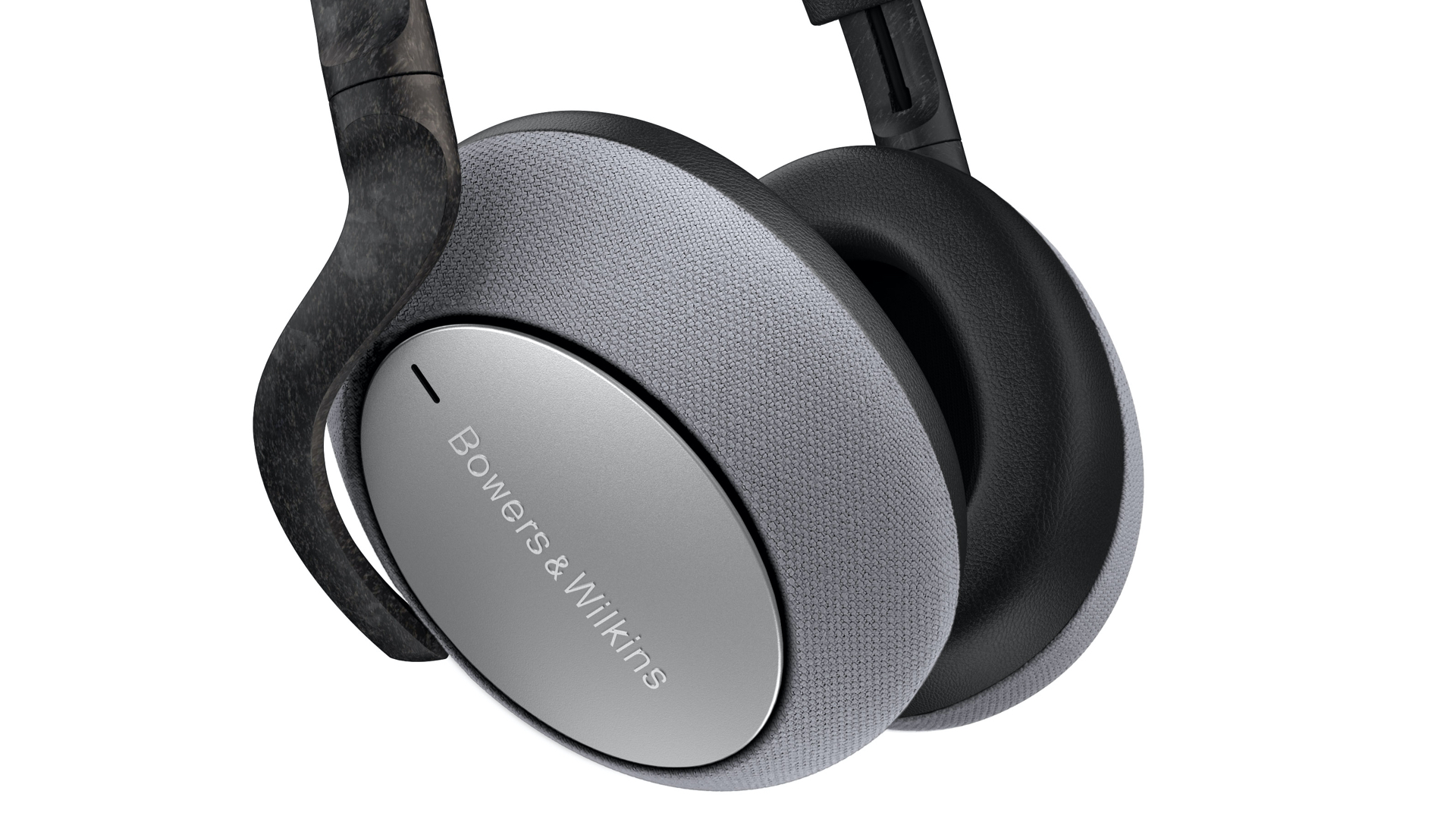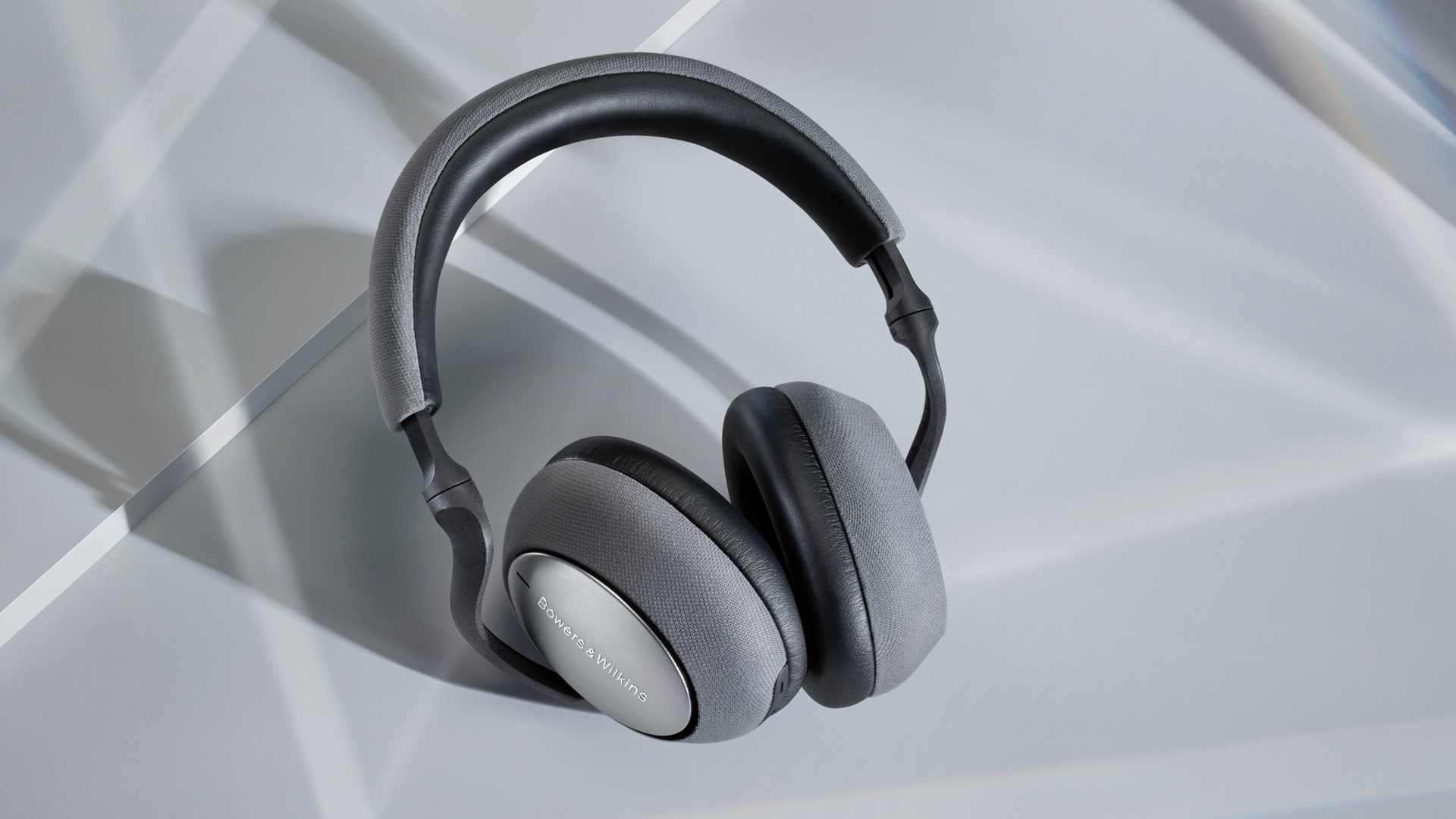Bowers & Wilkins PX7 review: the best blend of sound, build and style
B&W's PX7 are ANC headphones that sound as good as they look, or vice versa


Bowers & Wilkins PX7 is the kind of outstanding product that B&W built a global reputation on. It combines all their hard-won expertise in audio manufacture with cutting-edge noise cancellation and looks stunning as well
-
+
Poised, energetic and full-fat sound
-
+
Look and feel like a premium item
-
+
Decent noise-cancellation
-
-
No touch-controls
-
-
No EQ adjustment
-
-
Treble can sound edgy
Why you can trust T3

The Bowers & Wilkins PX7 review in one sentence: by combining premium materials, expert build and finish, and thoroughly convincing sound, Bowers & Wilkins has delivered one of the best best noise cancelling headphones you can buy.
Pound-for-pound, Bowers & Wilkins PX7 wireless over-ear active noise cancelling (ANC) headphones are right up there with the Sony WH-1000XM4 and the likes of Bose's NC 700.
The Bowers & Wilkins' success is built on very solid foundations, as there was very little wrong with the original PX wireless noise-cancellers. They were highly successful, considering how late Bowers came to the ANC headphones market.
Since their release there's been a follow-up, the PX7 S2, so if you're looking for the even more recent pair then have a read of our review. Spoiler alert: they take what's already great about the PX7 and amplify it further (but the price increases too).
Bowers & Wilkins PX7: Price and availability

Bowers & Wilkins PX7 are on sale now, originally priced at £349 in the UK and €369 in Europe. In the United States you’re looking at more like $399. In Australia they're about AU$700. Of course prices drop over time, so you'll be seeing better cash-saving options these days, as you can see from the real-time widget embedded below.
Bowers & Wilkins PX7 review: Build quality, design and battery life

First up, battery life is one of the most significant areas the PX7 improves on the PX it replaced. The PX7 is good for nigh-on 30 hours of continuous playback when operating wirelessly with active noise-cancelling engaged. That’s comparable to the market leaders from the likes of Bose, Sennheiser and Sony. Furthermore, the PX7s can eke out 5 hours of playback from just quarter of an hour’s charging via USB-C.
In design terms, nobody in their right mind is going to break with the long-established premium over ear headphones template – and Bowers & Wilkins is very much in its right mind. So the PX7s look exactly like what they are: a premium pair of wireless noise-cancelling over-ear headphones. They are actually a little blander than the original PX, but still exceedingly handsome.
Get all the latest news, reviews, deals and buying guides on gorgeous tech, home and active products from the T3 experts
The fabric covering the outside of the earcups and the outside of the headband is a) available in either ‘space grey’ (which is deep grey) or ‘silver’ (which is light grey), b) tactile and c) very hard-wearing. Pleather-covered memory foam forms the earpads and the inside of the headband, and consequently these areas are comfortable and gratifyingly slow to absorb your body heat. The earcups are joined to the headband by arms made of a woven carbon-fibre composite, using materials such as this has helped keep the PX7s’ weight down to a pretty trim 310g.
That, aside from some rather assertive Bowers & Wilkins branding on the outside of each earcup, is as far as design goes.
Build quality is similarly well up to the standard the price demands. There’s not a huge amount of articulation in the earcups, but they fold flat enough to fit into a reasonably compact carry-case. Everything feels well engineered, and there are no rogue creaks or groans from any part of the frame.
Unlike many of their noise cancelling rivals, the PX7s don’t have any touch controls and they don’t interact with voice assistants. All controls are physical, and they’re almost all arranged around the edge of the right earcup.
You’ll find a ‘power on/off/Bluetooth pairing’ slider, a three-button strip taking care of ‘play/pause/skip forwards/skip backwards’, a USB-C socket, and a 3.5mm analogue input for those rare occasions when you run out of battery power. There are also a couple of cutaways for telephony-related mics. The left earcup, by contrast, makes do with a single button for controlling the level of active noise-cancellation (‘off/auto/low/high’).
This is a similar approach to Shure's AONIC50, but B&W has made a better job of making the buttons findable and tactile.
Bowers & Wilkins PX7 review: Sound quality

In terms of getting the most out of your music regardless of where you're playing it from, the PX7 probably has you covered. These headphones are sporting AAC, as well as aptX Adaptive Bluetooth connectivity, which is unequivocally a good thing.
aptX Adaptive combines the aptX HD codec’s ability to deal with high-resolution digital audio files with aptX Low Latency’s, erm… low latency. So if you’re watching video content on a smartphone (for example) there is really excellent synchronicity between images and sound – not something that was true of previous generations of noise cancelling cans.
No matter what you’re listening to, it’s delivered via 46.3mm full-range drivers, one behind the fabric inside each earcup. These are the largest drivers fitted to any of Bowers & Wilkins’ headphones – which is logical enough, since these are Bowers & Wilkins’ largest headphones.
As is only right and proper from a company with such a long and prestigious history of outstanding loudspeakers, as well as a comparatively short and prestigious history of outstanding headphones, the PX7s are an accomplished, deeply enjoyable listen.
There's only one meaningful caveat, which is that up in the highest frequencies, on lower quality streams – Spotify being the most obvious culprit – can fester into sharpness and hardness. At higher volume, those treble sounds can become quite unforgiving.
However, if you’re listening to a big, information-rich, high-resolution file, treble sounds are as rapid and detailed as the rest of the frequency range.
That aside, let’s delight in all the many ways the PX7 delights.
For starters, their overall attitude is one of energy and exuberance. Harsh treble aside, it doesn’t matter what sort of music you’re playing, nor the sort of standard of digital file it derives from. The Bowers & Wilkins PX7 serves up it up with gusto. And they describe an impressively wide and well-defined soundstage. The distance from the extreme left to the extreme right of the presentation is really quite significant.
Even when listening to a bog-standard stream from the free tier of Spotify, there’s genuine weight and substance to the bass frequencies, as well as the detail and texture to make them sound properly alive. Up above there, voices in the midrange carry more than enough detail to sound characterful and convincing – and there’s no equivocating when the PX7 delivers a vocalist. Even if the recording is of multiple instrumental strands, singers sit front and centre, in a pocket of space that allows them to communicate eloquently.
Needless to say, if you step up from Spotify to a hi-res stream from a hard drive, or CD-quality and above Tidal or Qobuz stream, Bowers & Wilkins PX7 wrings out further detail. It sounds even more magnificent.
These are dynamic headphones too, both in the significance of the distance they can put between ‘very quiet’ and ‘very loud’ and in the more subtle harmonic dynamics that come from a musician varying the intensity with which they play their instrument. Little details like this are what give a recording real flavour, and if there are details there to be revealed then you can be sure the PX7 is revealing them.
In every circumstance, Bowers & Wilkins’ noise-cancelling proves effective. Even set to ‘high’ it exhibits quite a light touch. Nevertheless, when combined with the physical noise-suppression supplied by the way the earcups fit, it’s more than sufficient to negate the drone of public transport, or one’s fellow passengers.
Bowers & Wilkins PX7 review: verdict

As ever with noise cancelling headphones, Sony's top tier option is the ghost at the feast here. The #1 entry in our best noise cancelling headphones chart is arguably less well made or stylish than the PX7, but it's hardly badly made or ugly. Its driving, attacking but still quite nuanced sound is probably more palatable to many ears than Bowers & Wilkins' more analytical approach, and that's especially true if you like big-bottomed bass. Some people may be put off by the PX7's lack of touch controls and/or adjustable EQs, too.
However, everyone who is serious about finding the best noise cancelling headphones for their ears should give Bowers & Wilkins' range-topping ANC cans a listen. That burly, deft and insightful sound is sure to put the PX7 right near or at the top of their wireless noise cancelling headphones shortlist. If you're all about sound quality then these headphones are second to none (perhaps only really challenged by their replacement, the PX7 S2).
Also consider
Simon Lucas is a freelance technology journalist and consultant, with particular emphasis on the audio/video aspects of home entertainment. Before embracing the carefree life of the freelancer, he was editor of What Hi-Fi? magazine and website – since then, he's written for titles such as Wired, Metro, the Guardian and Stuff, among many others. Should he find himself with a spare moment, Simon likes nothing more than publishing and then quickly deleting tweets about the state of the nation (in general), the state of Aston Villa (in particular) and the state of his partner's cat.
